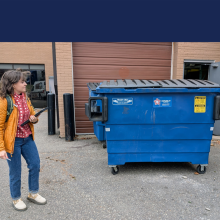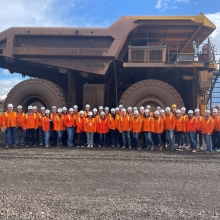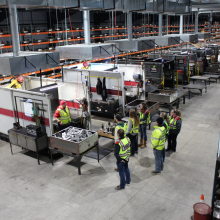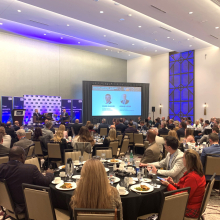How are Minnesota's demographic trends shaping its workforce?
"Currently, we have about 215,000 job vacancies in the state of Minnesota, and we have about 62,000 people actively looking for work"
At the recent Women in Business: annual legislator luncheon, business leaders were joined by women legislators to discuss the policy impacts on Minnesota businesses. The keynote address took on a critical issue to the state’s business leaders: the workforce shortage.
Minnesota State Demographer Susan Brower keynoted the event to share how demographic challenges are driving workforce issues throughout the state.
Employers and employees around the country felt the sting of the COVID-19 pandemic.
“At the pandemic's height in May of 2020, unemployment reached nearly 11% [in Minnesota], 335,000 Minnesotans were unemployed,” said Brower. “Job losses were concentrated in some industries in particular, some occupations such as child care, food and accommodation services, brick and mortar retail. We know that women were highly affected by these job losses and by the reorganization, workers of color and lower-skilled workers who were disproportionately impacted by job losses.”
Despite the gigantic change in unemployment, much of the workforce has now returned to work.
“When we look at the big picture today with our most recent data, the rates of labor force participation have largely returned to normal,” said Brower. “Generally what we see is mostly a return at every age group to labor force participation that we saw before the pandemic. While there is a subsection of people who have remained out, it's small…We have really returned to a place of full labor force participation that we saw before the pandemic struck.”

Minnesota State Demographer Susan Brower addresses the Minnesota Chamber's Women in Business: Annual legislator luncheon crowd.
But the workforce shortage that existed prior to COVID-19 persists today.
“Currently, we have about 215,000 job vacancies in the state of Minnesota, and we have about 62,000 people actively looking for work,” said Brower.
With much of the labor force back to work, what’s causing the current workforce shortage?
“There are still about 90,000 fewer workers in Minnesota than there were before the pandemic,” said Brower. "We’re still not back to the full number of workers we had before the pandemic. Looking at these numbers, a lot of people will ask, ‘Well, where'd they go? Where are they?’ Looking at the data, it's not the great resignation. It's not mothers, by and large, who have stayed outside of the workforce. When economists have looked at where the missing people are, they sometimes call it the mystery of the missing people."
Brower explained how economists believe the state's aging workforce is a driving factor.
"They found that it is just the aging of the workforce moving into those lower participation rates," said Brower. "We have more and more people in the older age groups in their late 50's, early 60's, those rates begin to bend downward pretty quickly after about the age of 59. It's really just a bulk of people moving through their lives moving into retirement that is depressing the overall number of people in the workforce."
Because of current demographic trends, Brower sees this trend holding in future years.
"The number of people that we have available to work today in Minnesota is very close to the number of people we will have in 10 years and 15 years and 20 years, unless we see some pretty big changes that we haven't seen in our recent past,” said Brower.
If current and future demographic trends aren’t in Minnesota’s favor, what are some takeaways for both business leaders and policymakers? Or as Brower posed the question, "What can we do as policymakers, as employers to make sure that the people who are employed in the state of Minnesota have the very best jobs that we can offer them?"
“Some of that power lies in the hands of employers to open up career trajectories, training, those kinds of things that make it a good job to have," said Brower. "Some of it may lie again in the realm of policy, but I think we're at a point where we may not outgrow this and we need to be thinking about how we curate the very best jobs for the people that we have.”
Click photos to view full size and ESC or refresh to return to page.
Women in Business attendee testimonial
"
This event was well organized, had great content, and provided a great networking opportunity. Also, being in a room full of powerful women is inspiring and simply good for the soul.
"
Interested in other Minnesota Chamber events?
Join us on January 4 at the Saint Paul RiverCentre for 2023 Session Priorities! This is the Chamber's highest-profile event of the year to kick-off this year’s legislative session, bringing together business and legislative leaders from throughout Minnesota. Come to hear a preview of the legislative session from those who set the agenda, celebrate the successes of the business community and socialize with political leaders – and each other!



